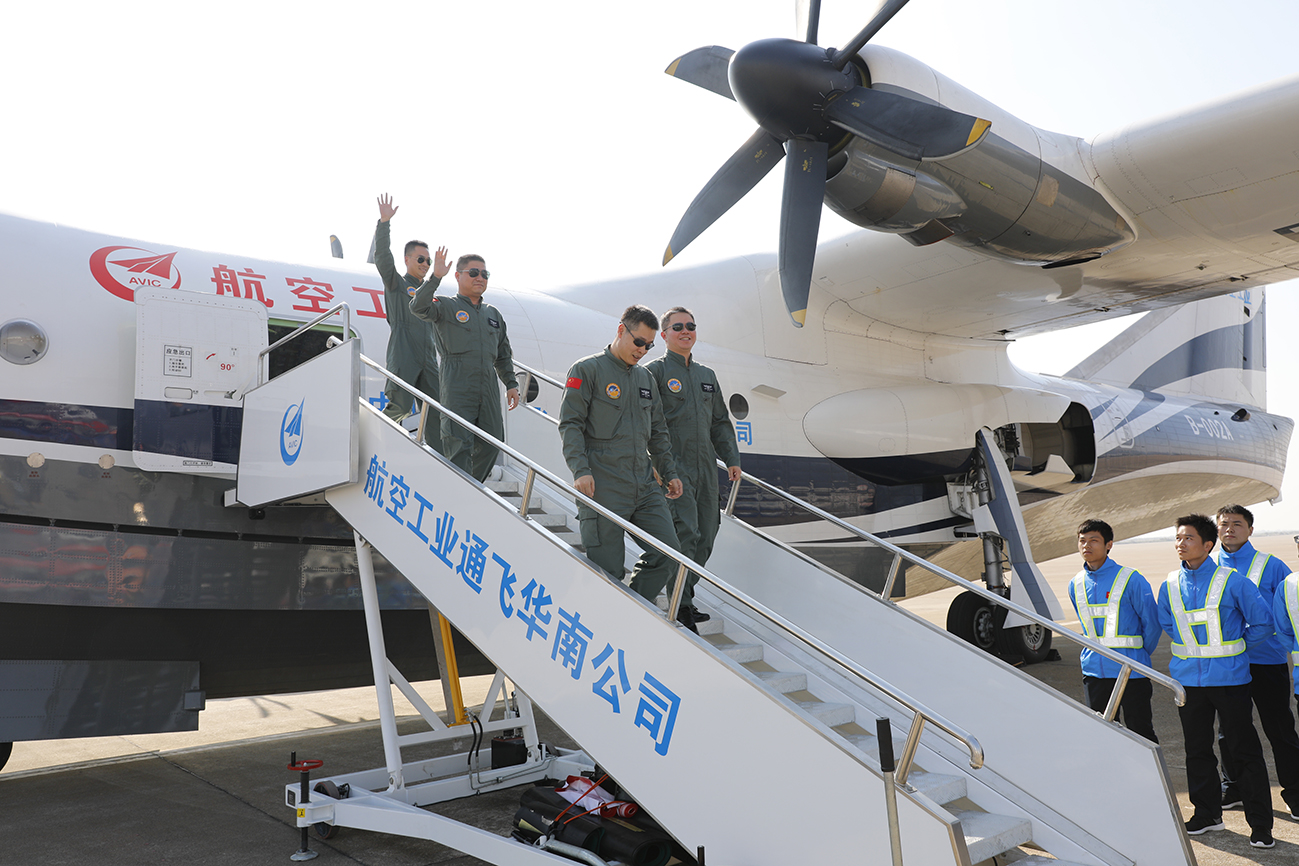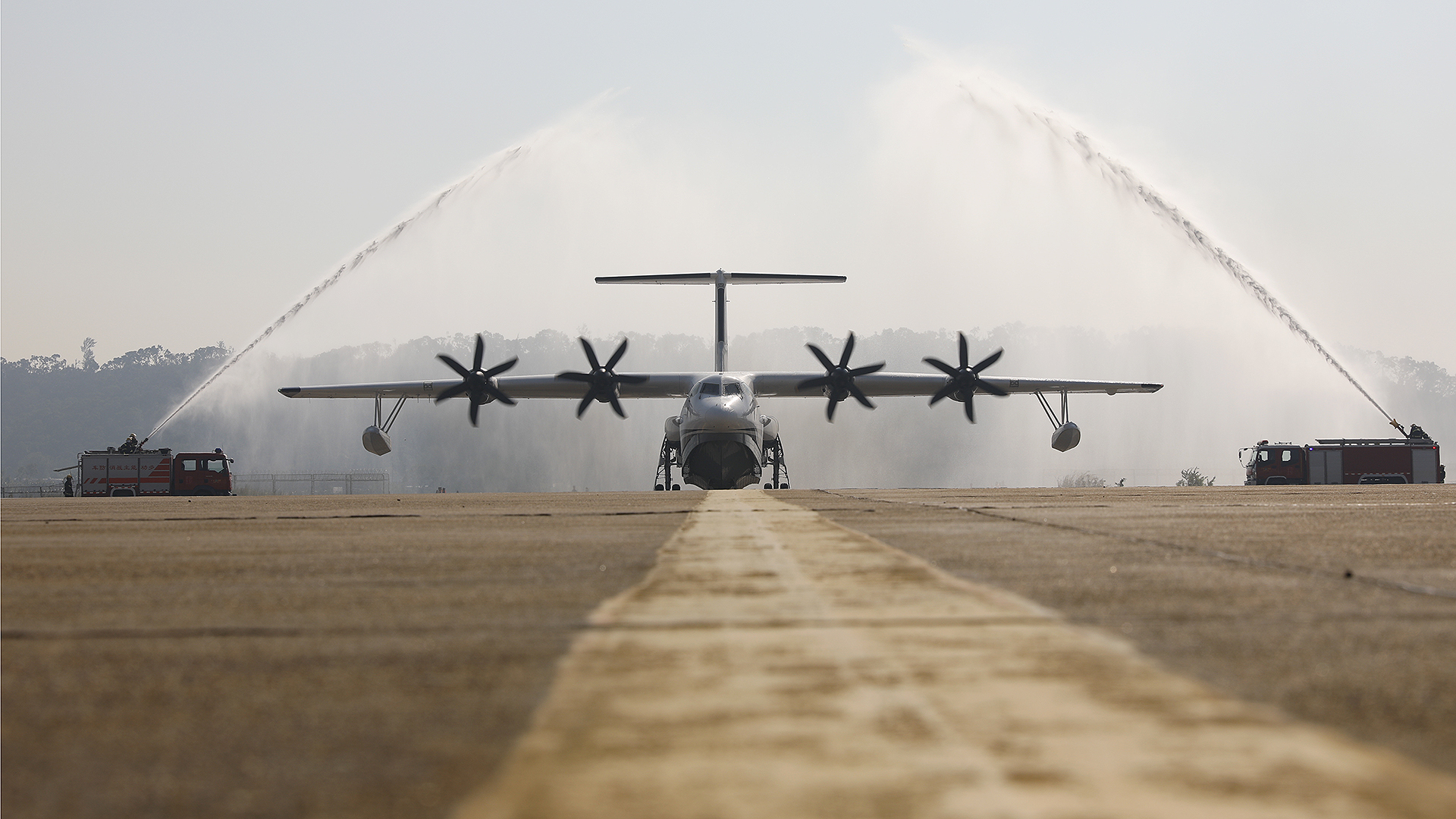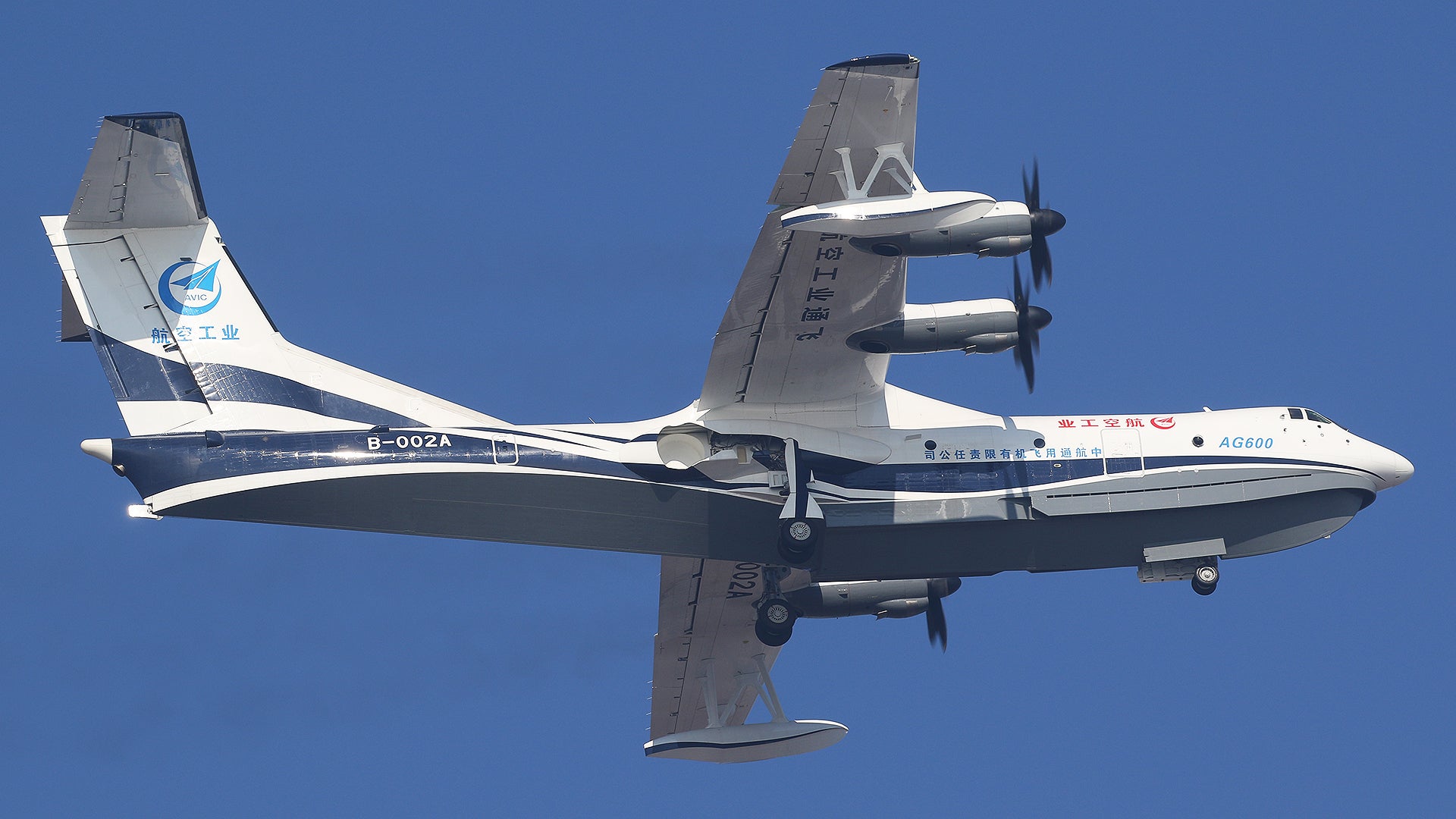It’s been a year and a half since we reported on China’s ambitious AG600 amphibian project, its intended uses, and its strategic implications, but yesterday the indigenous design finally took to the air for the first time.
The roughly 737-sized aircraft flew for a short period of time from Zhuhai airport in Guangdong province. The flight seemed fairly uneventful and video of it was aired by Chinese media and has made its way around social media.


According to Reuters, shortly after flight the aircraft was described by Chinese state media outlet Xinhua as “a protector spirit of the sea, islands and reefs.” This description isn’t likely that far from the truth as the AG600 will provide a unique capability when it comes to supporting China’s extra-territorial claims located hundreds of miles from the Chinese mainland. Most notably the aircraft will be used to support the country’s highly disputed and ever growing man-made island outposts in the South China Sea.

In July of 2016 The War Zone reported:
“Although China’s official stance is that these big amphibians will be used for dousing blazes and executing maritime rescue operations, they will most certainly also be used for patrolling large swathes of water, namely the contested and resource rich waterways of the South China Sea.
Similar to how China’s super-sized “coast guard” ships are used in the region, the AG600 will likely be used for spotting, monitoring, and tracking fishing fleets, energy exploration vessels and other nations’ claims and readouts around the highly disputed body of water.
The AG600 may also offer enhanced access to China’s smaller man-made island outposts in the South China Sea, especially those without runways. By using a hub and spoke system, leveraging China’s new runway on Fiery Cross Reef, which is capable of handling any aircraft, the AG600 could deliver personnel, fuel and other supplies to smaller islands that were only accessed by vessels and helicopter in the past. With the aircraft’s long-range It could also fly missions to these locales direct from the mainland while still offering a large useful load. By adding fixed-wing accessibility to more of its man-made islands, China would drastically up their strategic value and utility.
Really what China has in the AG600 is a new amphibious platform that can be adapted to a whole variety of roles than a specific plane for a specific task. And like so many indigenous Chinese designs, we will likely see multiple variants of this type in the not so distant future.
The AG600 could easily be weaponized at least in the surveillance role. Even adding a fighter-sized radar under the aircraft’s large radome and a data-link could allow the aircraft to provide real-time remote targeting of naval vessels for land-based and sea-based anti-ship missiles. It will also be interesting to see if future iterations include under-wing hardpoints for mounting stores and sensors. If so, the AG600 could be turned into a deadly amphibious sea-control platform or a more elaborate anti-submarine warfare aircraft.”

The AG600 is the largest amphibian currently being produced and the Chinese government currently has 17 on order, although that number could rise dramatically if missionized variants are also put into production.
Developing a new aircraft from scratch is a costly endeavor. With this in mind, China will be looking for opportunities to export the AG600 wherever it can. If the aircraft comes close to meeting its design specifications—including flying for 12 hours at a time over nearly 3,000 miles and at a speed of up to 350mph—it could prove as an attractive and adaptable utility aircraft for some. Seeing that the AG600 can fight fires one day and then carry 50 passengers and cargo to remote locations the next, it offers an attractive capability set even if for a relatively limited number of potential customers.
We’ll keep an eye on the program as it enters into its flight testing phase, but considering China is trying to elevate their aerospace industry on a global scale, and that this aircraft isn’t a sensitive military capability, there shouldn’t be any shortage of Chinese press on the AG600 or its future exploits.
Contact the author: Tyler@thedrive.com
